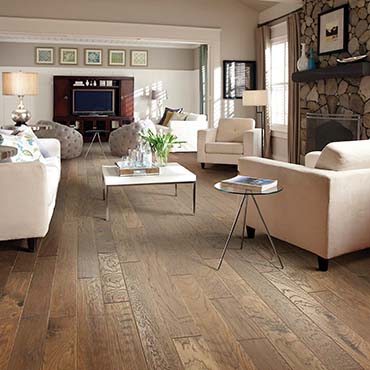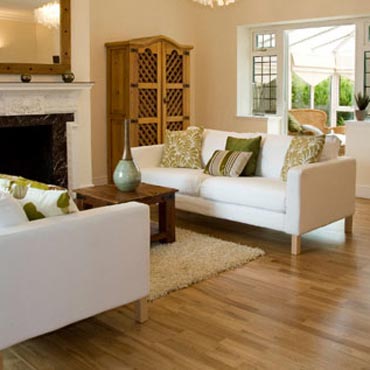Engineered Longstrip Flooring

Engineered Longstrip Flooring: A Sophisticated Choice for Contemporary Interiors
Transform Your Space with Engineered Longstrip Flooring
In the world of design, flooring is the foundation that sets the tone for the entire space. For interior designers and decorators, selecting the right flooring is a blend of aesthetic expression and functional precision. Engineered Longstrip Flooring offers the ideal solution, combining the timeless beauty of wood with modern engineering to deliver exceptional quality, versatility, and elegance.
What Is Engineered Longstrip Flooring?
Engineered Longstrip Flooring is a premium flooring option that features elongated planks crafted from several layers of real wood veneer, bonded to a high-density core. These planks create a seamless, continuous visual flow, making spaces appear larger and more open. Designed to offer the beauty of
hardwood with enhanced stability, this flooring type is a favored choice for both residential and commercial projects, known for its ability to withstand fluctuations in temperature and humidity.
Why Engineered Longstrip Flooring Stands Out
The key distinction of Engineered Longstrip Flooring lies in its construction. While solid
wood floors can warp and expand, this engineered solution is built to endure environmental challenges, making it particularly appealing for areas with underfloor heating or variable climates. Its long, narrow planks offer a contemporary elegance, emphasizing the natural grain of the wood with fewer seams, allowing the flooring to act as a subtle yet impactful design element.
Engineered Longstrip Flooring is different from Engineered Parquet Flooring, which features geometric patterns and a more traditional aesthetic, and Engineered Plank Flooring, which typically consists of shorter and wider boards. While all engineered flooring options provide durability, Longstrip Flooring stands out for its visual continuity and ability to enhance the perception of space. This makes it an excellent choice for creating open, airy environments or for rooms where maximizing the sense of scale is crucial.
Features and Benefits: The Designer’s Perspective
For interior designers and decorators, the versatility of Engineered Longstrip Flooring cannot be overstated. Its sleek and refined appearance complements a variety of styles, from minimalist contemporary to rustic chic. Some key features that make this flooring ideal for design professionals include:
- Aesthetic Versatility: Available in a range of finishes and wood species, from warm oak to deep walnut, this flooring adapts to any design vision. Whether you’re curating a cozy living room or a luxurious commercial space, Engineered Longstrip Flooring seamlessly integrates with your aesthetic goals.
- Superior Durability: With multiple layers of wood bonded together, this flooring is more resistant to warping, expanding, and contracting than solid wood. This makes it a reliable choice for high-traffic areas, including kitchens, entryways, and offices.
- Ease of Installation: The precision tongue-and-groove design allows for easy installation over various subfloors, including concrete, making it an ideal solution for renovation projects. For decorators working on tight timelines, this feature is invaluable.
- Sustainability: In an era where eco-friendly choices are paramount, Engineered Longstrip Flooring stands out for its use of responsibly sourced materials. Its multi-layered construction minimizes the use of rare hardwoods, aligning with sustainable building practices.
- Temperature and Moisture Resistance: Unlike solid wood, Engineered Longstrip Flooring performs exceptionally well in environments with temperature fluctuations or higher humidity, such as bathrooms, kitchens, or basements.
What Makes Engineered Longstrip Flooring Unique?
Engineered Longstrip Flooring’s appeal is not just in its visual aesthetic, but in its ability to fuse design with innovation. Its elongated planks and minimal seams allow the natural wood grain to take center stage, creating a subtle yet striking impact. This design feature also contributes to a more cohesive look, as the eye is drawn along the length of the floor, enhancing the sense of space and continuity.
For designers focused on long-term performance, its superior stability and ability to withstand environmental changes give it an edge over traditional wood flooring. Moreover, its compatibility with modern systems such as underfloor heating adds an extra layer of functionality, making it a flexible and practical option.
Best Rooms for Engineered Longstrip Flooring
Engineered Longstrip Flooring can be used in a wide range of rooms, from intimate residential spaces to expansive commercial settings. Its ability to enhance the feeling of openness makes it particularly suitable for:
- Living Rooms: The seamless design of the long planks creates an inviting and spacious atmosphere.
- Hallways and Entryways: Engineered Longstrip Flooring can elongate narrow spaces, making them feel larger and more welcoming.
- Kitchens and Dining Rooms: Its durability and resistance to moisture make it perfect for these high-traffic areas.
- Offices and Studios: For creative spaces, this flooring option adds a modern, sophisticated touch that can complement both minimalist and eclectic designs.
Conclusion: Elevate Your Interiors with Engineered Longstrip Flooring
Engineered Longstrip Flooring offers interior designers and decorators a perfect blend of beauty, functionality, and sustainability. Its timeless design and adaptability make it a go-to option for those looking to elevate their spaces while meeting the demands of contemporary living. With its unique features, from aesthetic versatility to superior performance, this flooring solution stands as a top choice for professionals seeking to create inspiring, high-quality interiors.
Disclaimer: The information provided in this article is for general informational purposes only. While we strive to ensure the accuracy and reliability of the information presented, we make no warranties, express or implied, about the completeness, accuracy, reliability, suitability, or availability with respect to the content. Any reliance you place on such information is strictly at your own risk. We recommend consulting with professionals for specific advice tailored to your project’s needs, particularly regarding building codes, regulations, and product specifications.
Under no circumstances shall we be liable for any loss or damage, including without limitation, indirect or consequential loss or damage, arising from the use of, or reliance on, the information provided in this article.




